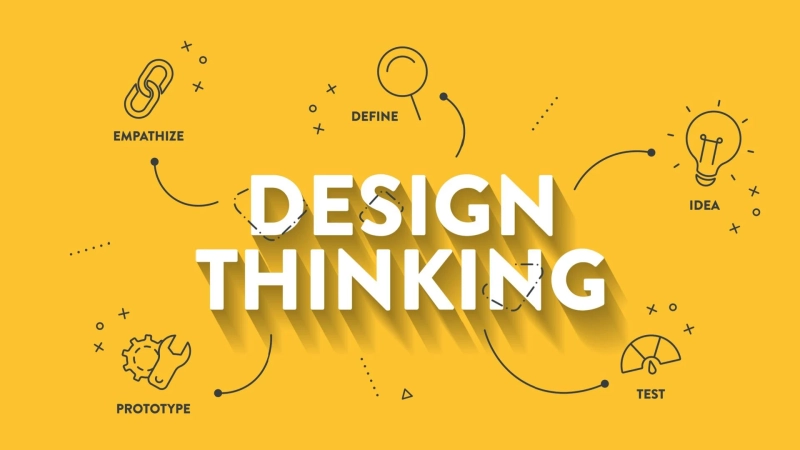In today’s fast-paced and ever-changing business landscape, innovation is no longer a luxury but a necessity. Organizations across various industries are increasingly turning to creative methodologies to solve complex problems and foster a culture of innovation. One such methodology that has gained significant traction is Design Thinking. Central to its effectiveness are Design Thinking workshops, which serve as immersive environments where participants can harness their creativity and collaboratively develop human-centered solutions.
Understanding Design Thinking
Before diving into the specifics of a Design Thinking workshop, it is essential to understand the fundamentals of Design Thinking itself. Originating from the field of design, Design Thinking is a problem-solving approach that prioritizes empathy, ideation, and experimentation. It encourages teams to deeply understand the needs of the end-users, redefine problems from a human-centric perspective, and brainstorm a wide range of potential solutions before prototyping and testing them.
The core principles of Design Thinking can be broken down into five stages: Empathize, Define, Ideate, Prototype, and Test. Each stage is iterative, meaning teams can loop back to previous stages as new insights emerge, ensuring that solutions are continuously refined and improved.
The Anatomy of a Design Thinking Workshop
A Design Thinking workshop is a structured session where participants engage in the stages of Design Thinking to address specific challenges. These workshops are highly interactive and collaborative, often bringing together individuals from diverse backgrounds and disciplines. This diversity is crucial as it fosters a broader range of perspectives and ideas.
1. Setting the Stage
The success of a Design Thinking workshop begins with proper planning. Facilitators must clearly define the challenge to be addressed and set specific goals for the workshop. This involves gathering preliminary insights and data about the problem, which will inform the Empathize stage. Participants are then introduced to the principles of Design Thinking and the structure of the workshop.
2. Empathize
The first stage of the workshop focuses on understanding the users and their needs. Participants engage in activities such as interviews, observations, and empathy mapping to gather deep insights into the user experience. The goal is to build a comprehensive understanding of the problems from the users’ perspectives, which will guide the rest of the workshop.
3. Define
In the Define stage, the insights gathered during the Empathize stage are synthesized into a clear problem statement. This involves identifying patterns and key issues that need to be addressed. The problem statement should be specific, actionable, and centered on the user’s needs. A well-defined problem statement serves as a guiding light for the ideation process.
4. Ideate
The Ideate stage is where creativity takes center stage. Participants brainstorm a wide range of ideas and potential solutions to the problem statement. Techniques such as mind mapping, sketching, and role-playing are often used to stimulate creative thinking. The emphasis is on quantity over quality, encouraging participants to think outside the box and explore unconventional ideas.
5. Prototype
Once a diverse set of ideas has been generated, the next step is to create prototypes of the most promising solutions. Prototyping is a critical part of Design Thinking as it allows teams to bring their ideas to life and explore their feasibility. Prototypes can be anything from simple sketches and mock-ups to more complex models. The goal is to create tangible representations of ideas that can be tested and refined.
6. Test
The final stage of the workshop involves testing the prototypes with real users to gather feedback. This stage is iterative, with teams continuously refining their solutions based on user feedback. Testing helps to validate ideas, identify potential flaws, and ensure that the final solution effectively addresses the user’s needs.
The Impact of Design Thinking Workshops
Design Thinking workshops have a transformative impact on organizations and individuals alike. They foster a culture of collaboration and innovation, empowering teams to tackle challenges with a fresh perspective. By placing the user at the center of the problem-solving process, these workshops ensure that solutions are both innovative and practical.
Moreover, Design Thinking workshops help to break down silos within organizations, promoting cross-functional collaboration. They encourage participants to embrace failure as a learning opportunity, fostering a mindset of continuous improvement. The skills and mindset developed during these workshops extend beyond the sessions themselves, equipping individuals with the tools to drive innovation in their everyday work.
Conclusion
In an era where change is the only constant, Design Thinking workshops offer a powerful means of navigating complexity and driving innovation. By embracing empathy, creativity, and experimentation, these workshops enable organizations to develop human-centered solutions that truly resonate with their users. Whether addressing a specific challenge or fostering a broader culture of innovation, Design Thinking workshops are a valuable investment in the future of any organization.


